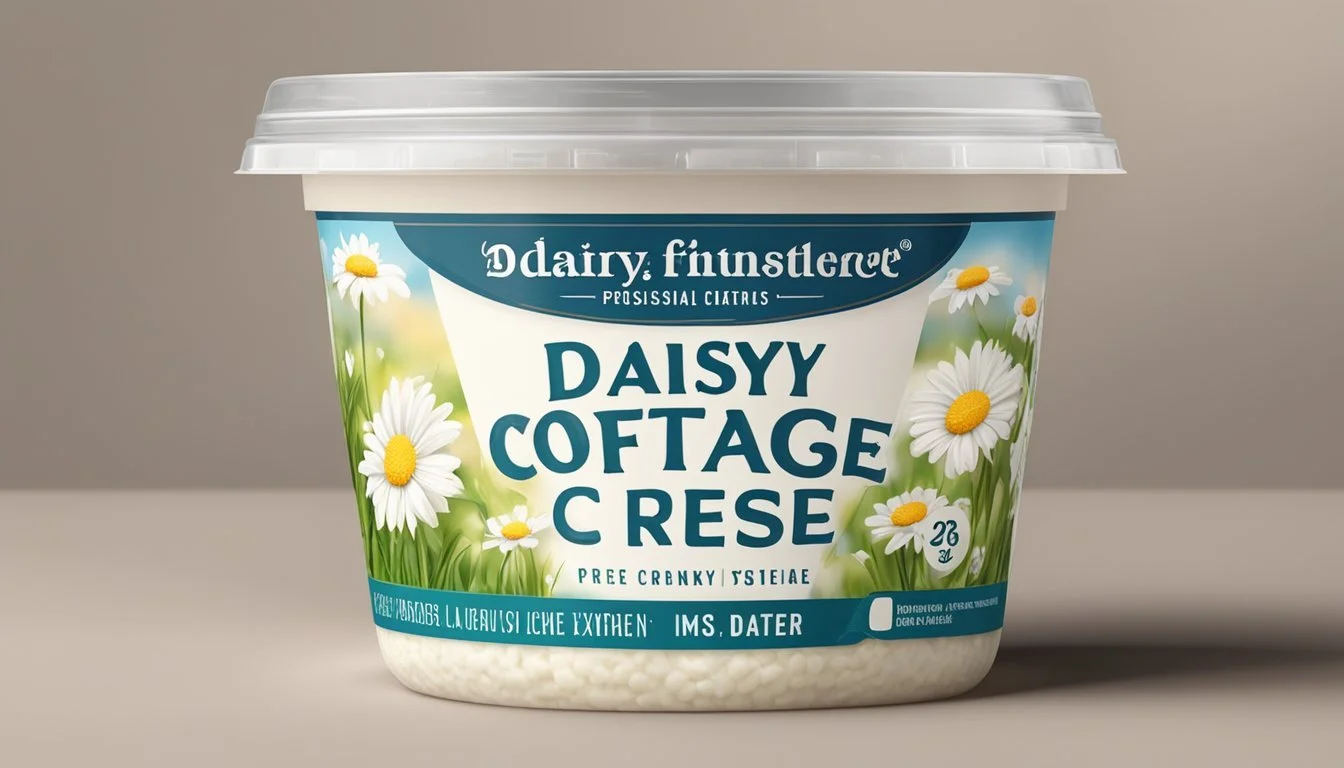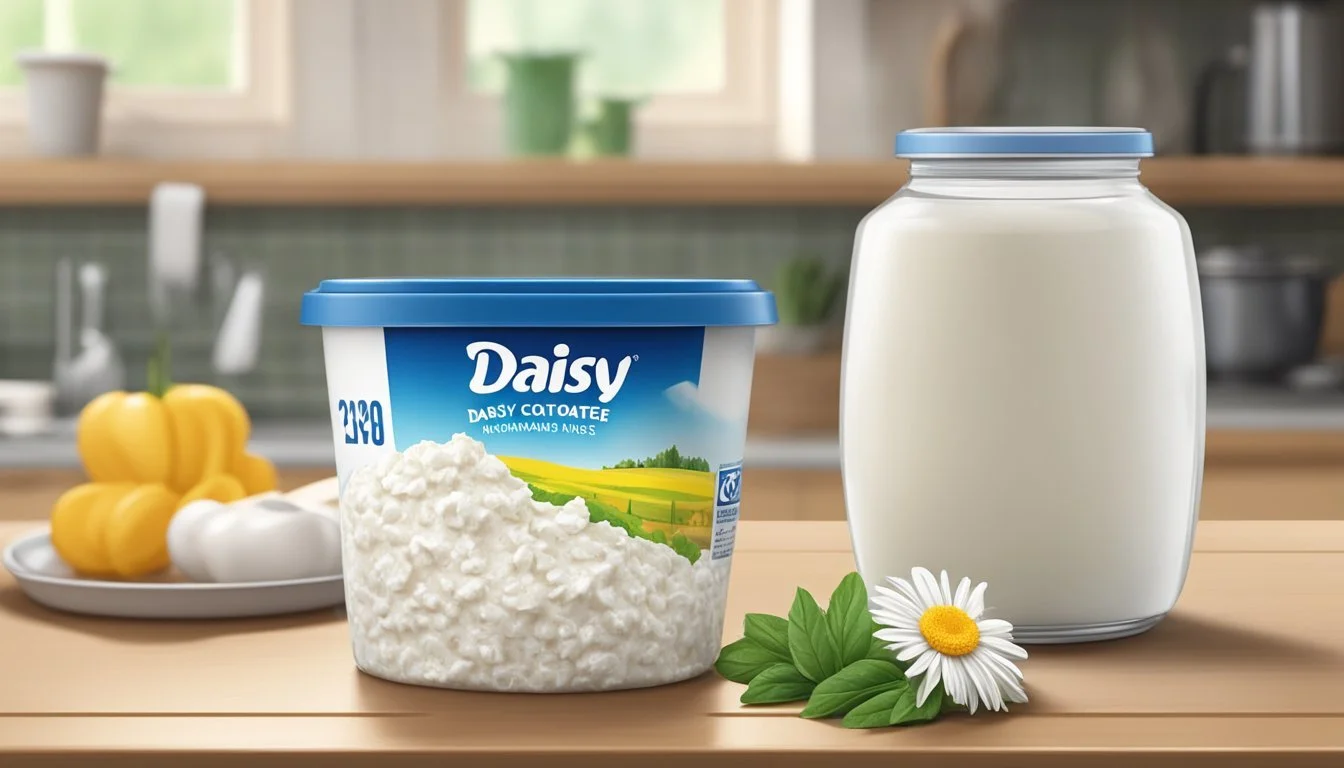How Long Does Daisy Cottage Cheese Last?
Shelf Life and Storage Tips
Understanding the shelf life of dairy products, such as cottage cheese (how long does cheese last?), is crucial for both food safety and quality. Daisy Brand cottage cheese (how long does cottage cheese last?), a common choice for consumers, typically denotes the fat content as 4% for regular and 2% for low-fat options. The shelf life of this cottage cheese varies based on several factors, including the storage method and whether the package has been opened.
An unopened container of Daisy cottage cheese should be consumed by the date printed on the packaging, which is the manufacturer's estimate for best quality. Once opened, the cottage cheese remains good for consumption up to two weeks, as long as it is kept refrigerated and tightly sealed to prevent the introduction of contaminants. After this period, or if there are any signs of spoilage such as an off odor, changes in texture, or a sour taste, the cottage cheese should be discarded to avoid the risk of foodborne illness.
Consumers should always adhere to the practice of checking the product's expiration or "use-by" date, and consistently maintain proper storage conditions to extend the freshness of their cottage cheese. Proper storage includes keeping the dairy product in the fridge at a consistent temperature and sealing it in an airtight container if the original packaging does not reseal effectively.
Understanding Cottage Cheese
Cottage cheese is a versatile dairy product with unique properties that distinguish it from other types of cheese. It is appreciated for its nutritional value, providing a significant source of protein and minerals.
What Is Cottage Cheese?
Cottage cheese is a soft, fresh cheese made from milk curds. Unlike aged cheeses (What wine goes well with aged cheeses?), cottage cheese is not pressed or aged but is simply drained, washed, and sometimes creamed. Its characteristic lumps, known as curds, have a mild flavor that can range from sweet to slightly tangy. Cottage cheese is often consumed for its health benefits as it is high in protein and relatively low in fat, especially in its low-fat varieties. It is commonly available in different fat levels and may be marketed as all-natural or gluten-free to cater to various dietary preferences.
Differences Between Cottage Cheese and Other Dairy Products
Cottage cheese stands out from similar dairy products in texture, production, and nutritional profile.
Texture and Production: Contrast it with cream cheese (how long does cream cheese last?), which is also a fresh cheese but is blended to a smooth consistency. Unlike sour cream, which is cream that has been fermented by lactic acid bacteria, cottage cheese retains its chunky texture from the curdled milk solids.
Nutritional Profile: While all these dairy products originate from milk, cottage cheese is especially noted for its high protein content. Each serving of cottage cheese can provide a rich supply of minerals like calcium and phosphorus, contributing to a nutritious diet.
By understanding these key aspects, consumers can make informed choices that align with their texture preferences and nutritional needs.
Inspecting Cottage Cheese Quality
When checking the quality of Daisy cottage cheese, it's critical to inspect its texture, smell, taste, and color. These indicators can help determine whether the cottage cheese is fresh and safe to consume.
Texture and Appearance
Cottage cheese should have a creamy texture with small, soft curds. If the texture has become slimy or excessively watery, this is a sign of spoilage. Fresh cottage cheese will appear creamy and should not have any signs of separation. However, a small amount of clear liquid (whey) on top is normal and can be stirred back in.
Smell
A fresh smell is key in assessing cottage cheese quality. It should have a clean, slightly sour smell characteristic of fermented dairy. A rancid or strong sour smell indicates that the cottage cheese may be past its prime and could be unsafe to eat.
Taste
The taste of cottage cheese should be mildly tangy, but not overwhelmingly sour. If the taste has a sharp sourness or bitterness, this implies that the cottage cheese has deteriorated.
Color Changes
Cottage cheese should typically be white in color with a uniform appearance. Any yellowish discoloration or the presence of color spots can indicate mold or other types of spoilage. Discoloration should be taken as a sign that the cottage cheese should not be consumed.
Storage Guidelines
The freshness and safety of Daisy cottage cheese are heavily tied to proper storage. From refrigeration to freezing, the quality of the product can be maintained by following specific guidelines.
Refrigeration Best Practices
Refrigerating Daisy cottage cheese is essential for maintaining its freshness. The product should be stored in the refrigerator at a constant temperature of 40º F or lower and consumed within two weeks after opening. Ensure that the container is tightly sealed with its original plastic lid or transferred to an airtight container to protect from contaminants and prevent the absorption of other flavors.
Keep refrigerated: Always store in the fridge.
Sealing: Use the original packaging with a foil seal or airtight container.
Temperature: Ensure the fridge is at 40º F or lower.
Can You Freeze Cottage Cheese?
Freezing Daisy cottage cheese is possible, albeit with potential texture changes due to its high moisture content. For best quality, freeze in an airtight container or heavy-duty aluminum foil. It can be frozen for 2-3 months. Thaw in the refrigerator and stir before using to help restore its texture.
Airtight packaging: Container or aluminum foil recommended.
Duration: Up to 2-3 months of storage.
Thawing method: Thaw in the refrigerator.
Shelf Life Factors
Several factors influence the shelf life of Daisy cottage cheese. Apart from following the use-by date, which signifies peak quality, the product's freshness depends on consistent refrigeration and sealing to prevent exposure to air. Once opened, the shelf life can be within the two-week window if the storage conditions are optimal. Any deviation may shorten the shelf life due to the perishable nature of cottage cheese.
Consistent refrigeration: Crucial for extending shelf life.
Air exposure: Minimize to prevent spoilage.
Use-by date: Indicates peak quality; use as a reference point.
Identifying Spoilage
When assessing the quality of Daisy Cottage Cheese, promptly identifying spoilage is crucial for safety and to avoid the risks associated with consuming spoiled dairy products.
Signs of Spoiled Cottage Cheese
Spoiled cottage cheese often presents a set of identifiable signs. Consumers should look for:
Mold: Visible molds or discoloration on the surface or within the product indicate spoilage.
Odor: An off odor that is sour or rancid rather than the mild, creamy scent of fresh cottage cheese.
Texture: Any deviations from the product's typical creamy consistency, such as sliminess or excess moisture, suggest degradation.
Flavor: A sour or otherwise off-putting taste is a clear sign that the cottage cheese is no longer safe to consume.
It's important to recognize these signs even before the expiration date as bacteria can cause spoilage at any point.
Health Risks of Consumed Spoiled Dairy
Consuming spoiled dairy products, such as bad cottage cheese, may lead to:
Foodborne illness: Symptoms may include nausea, vomiting, and diarrhea, often caused by harmful bacteria.
Waste: When cottage cheese spoils, it must be discarded, leading to unnecessary waste.
Safety protocols require that any cottage cheese exhibiting spoilage should not be consumed to avoid potential health risks.
Consuming Cottage Cheese Safely
When consuming cottage cheese, food safety and quality are paramount. One should pay attention not only to the expiration date but also to the product's sensory cues to determine its safety for consumption.
How Long After Opened?
Once opened, Daisy Cottage Cheese should be consumed within two weeks, as long as it is maintained at refrigerated temperatures of 40 degrees Fahrenheit (4 degrees Celsius) or lower. According to the Department of Health and Human Services, the clock starts ticking the moment the seal is broken. This table outlines the important considerations:
Condition Recommendation Refrigerator Storage After Opening Up to two weeks if stored properly Fridge Location Avoid the fridge door, as the temperature varies Utensils Used Always use clean utensils to minimize contamination
Using Your Senses
Beyond the printed date, one's own senses are also reliable indicators of cottage cheese quality. Sour smell, changes in texture, or any discoloration may signal spoilage. Here are what to look for:
Smell: Cottage cheese should have a mild scent. A sharp, sour smell suggests it may not be safe to eat.
Texture: If the cheese has become slimy or overly watery, it's best to discard it.
Appearance: Any signs of mold or discoloration mean that the cottage cheese is no longer safe for consumption.
It's essential to observe these sensory changes, especially before the best before date or sell-by date as they give a more immediate indication of the freshness of the product.






